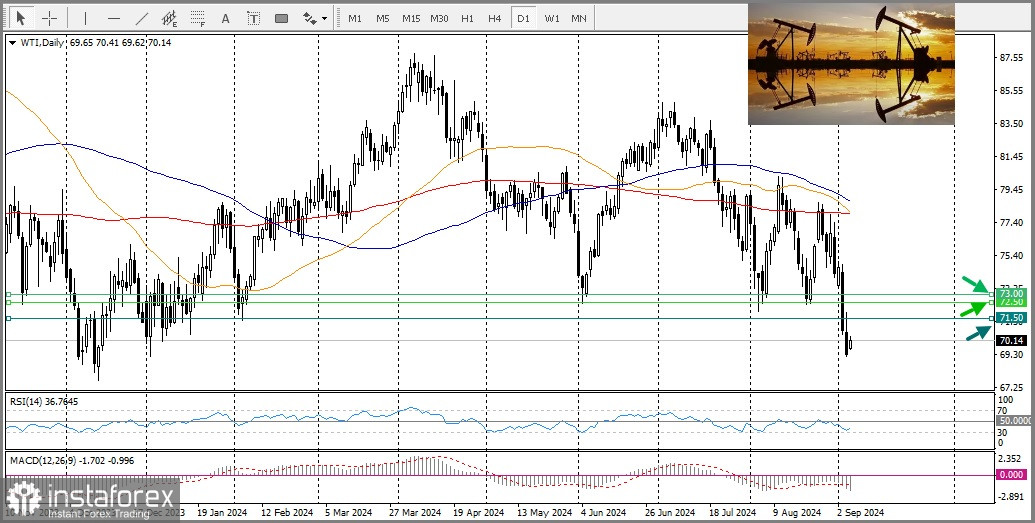
Today, U.S. crude oil, West Texas Intermediate (WTI), is attempting to attract some buyers. However, there is still no strong bullish sentiment, and the commodity remains vulnerable to continuing its downward trend, which has persisted over the past two months.
Reports that OPEC+ is considering delaying the planned October increase in oil production have been the main factor supporting crude oil prices. Additionally, weak demand for the U.S. dollar further benefits the USD-denominated commodity. Nonetheless, persistent concerns about demand in China—the world's largest oil importer—and renewed worries about an economic downturn in the U.S. are acting as headwinds for crude oil.
Paired with technical analysis, this requires some caution before confirming that crude oil has formed a short-term bottom. Since early July, crude oil prices have been declining. This week, the commodity broke through the horizontal support level of $71.50. Oscillators on the daily chart remain deep in negative territory and far from oversold levels. This suggests that the path of least resistance for the commodity is downward. Any recovery attempt is likely to be sold off, so it is prudent to wait for strong follow-up buying before entering long positions.
A move above the round level of $70.00 will face a strong barrier, likely remaining limited by the horizontal zone around $71.50, which will serve as a key pivot point. If this level is decisively breached, it could trigger a short-covering rally, allowing crude oil prices to break through intermediate resistance at $72.50 and approach the $73.00 level.
On the other hand, yesterday's low provides short-term support against further declines ahead of the key psychological level of $68.00.
A convincing break below this level would act as a fresh trigger for the bears, pulling crude oil prices toward levels below $67.00 or the June 2023 low.





















